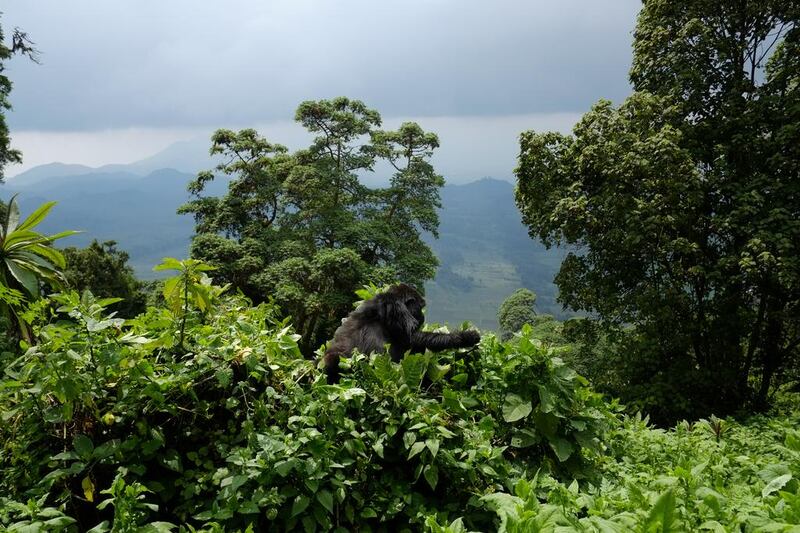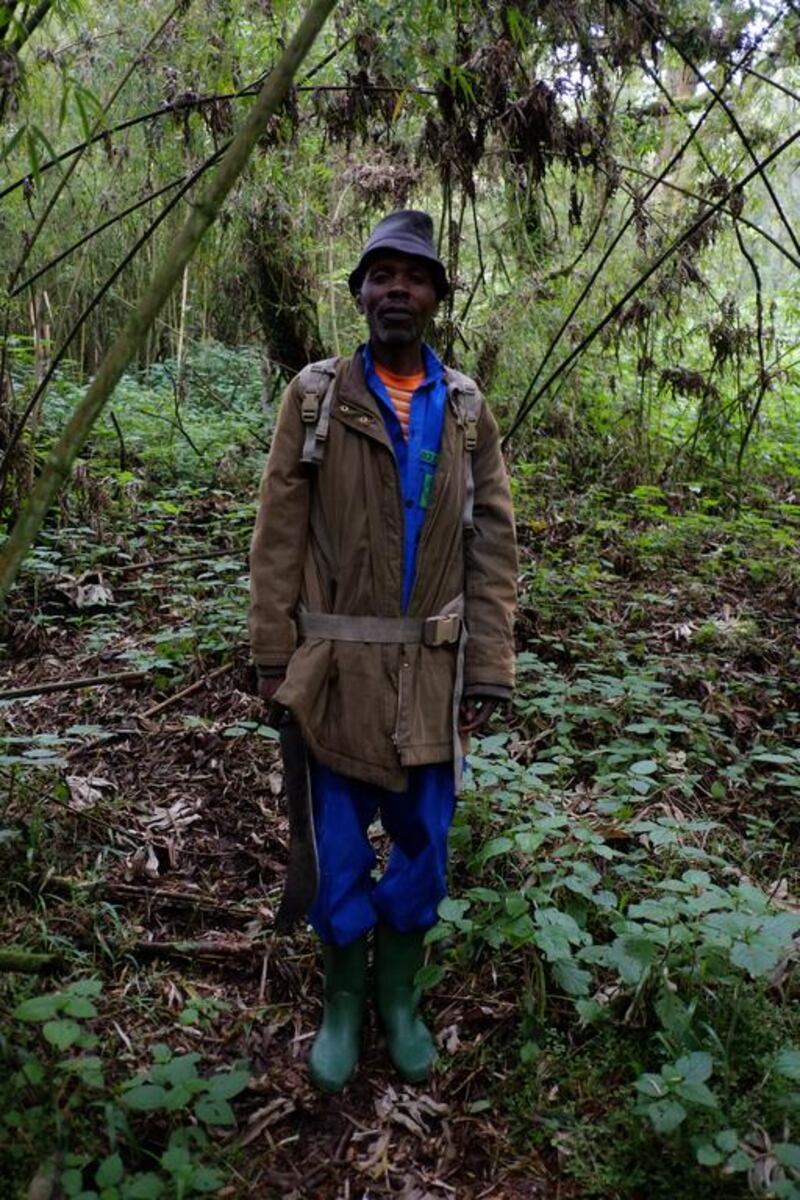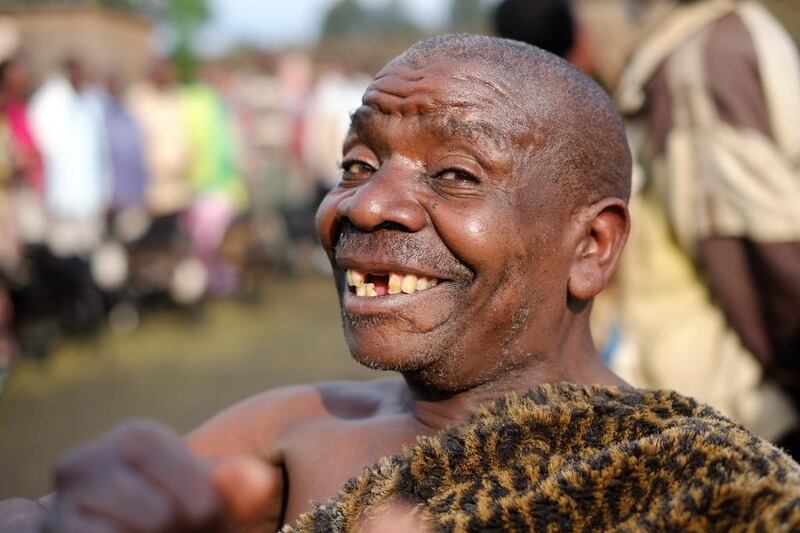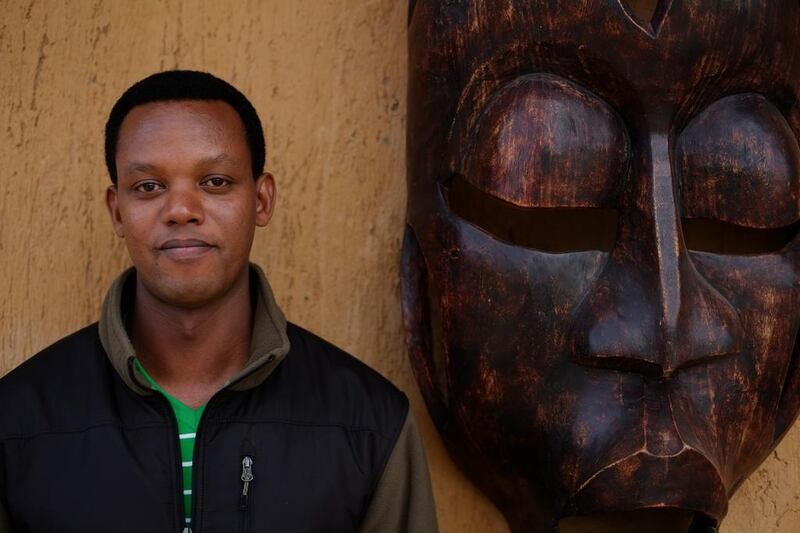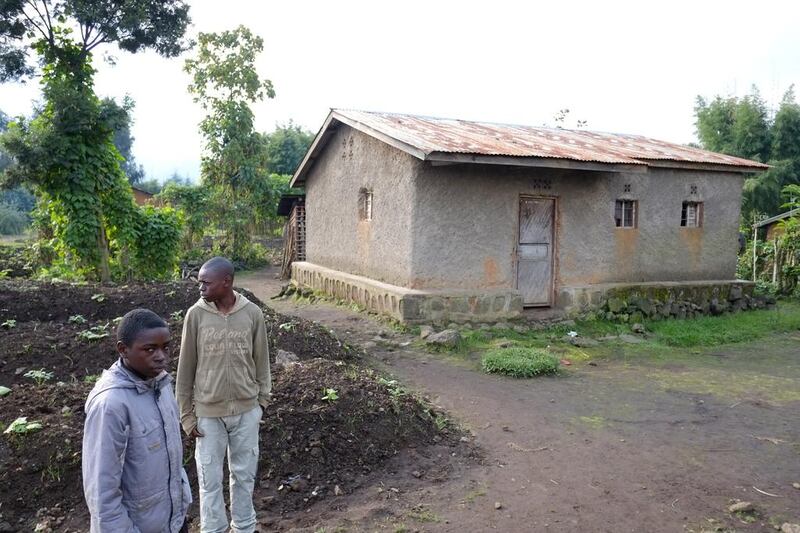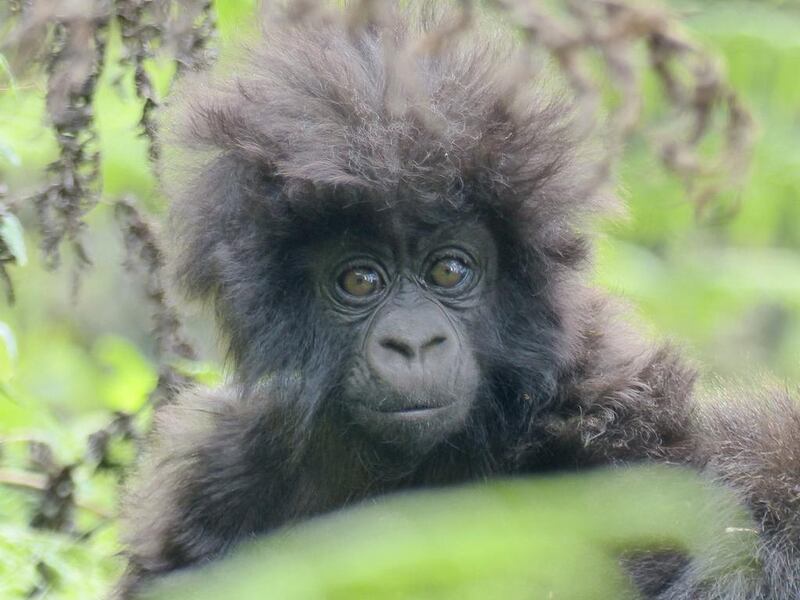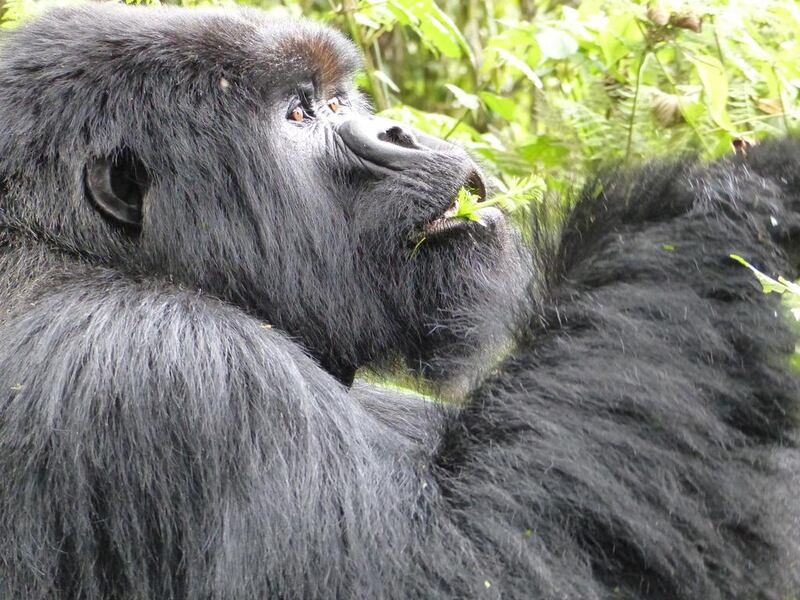All morning the mountain gorillas were moving quickly through dense undergrowth and a light June mist, evading a team of human trackers in the thin air, 3,100 metres above sea level on the side of a volcano near the old smuggling routes where the borders of Rwanda, the Democratic Republic of Congo and Uganda meet.
By mid-morning the 17 gorillas of the Susa group stopped, settling down to rest and eat in a thick patch of wild celery and stinging nettles. Their leader, a vast and immensely powerful 34- year-old silverback named Kurira, fell asleep while young gorillas played a respectful distance away, round bundles of black fur chasing each other with clumsy enthusiasm up trees that collapsed under their weight.
On the outer edge of the group, standing guard against predators – including any human hunters – were two enormous blackback male gorillas, young enough that the wide saddle of fur running down their spines from shoulder to waist had not yet turned grey.
As the mountain gorillas ate, the trackers continued their search.
Homo sapiens – humans – and gorillas may be close genetic relatives, sharing 97.7 per cent of their DNA, but gorilla beringei beringei move much faster through the high altitudes and dense, damp vegetation, too quickly for people, who have to cut paths with machetes and scramble up muddy slopes on hands and knees to keep up.
Even if the humans in question come from a long line of skilled hunters, finding the gorillas can be hard. Despite their size and striking black or black and silver colouring, the mountain gorillas can quickly vanish into the foliage if they wish to avoid detection.
You can stand within a few feet of a gorilla and never know – unless they are noisily eating or, perhaps, singing, as they occasionally do when they come across a particularly delicious meal of celery, stinging nettles, bamboo or ants on a piece of rotting tree bark.
By early afternoon, however, the three trackers, drawn from a community of former poachers, had caught up with the Susa group. Rather than attacking the gorillas, as they may have done a few years ago, they radioed details of their location to rangers working with the Rwanda Development Board. The rangers then guided in a small group of tourists in to spend a hour watching the rare mountain gorillas in their natural habitat.
Once killed or captured and sold to collectors, dead or alive, whole or in pieces, the mountain gorillas are now protected by many of the same men who once pushed them to the brink of extinction. The poachers-turned-game keepers now work in the gorillas’ defence, keeping the critically endangered animals alive as a part of a highly successful – but still frail and far from complete – conservation programme. Faced with human population growth, political instability, wars, poverty and greed, the future of the mountain gorillas, one of the rarest mammals on earth, remains uncertain.
In the 1960s fewer than 300 mountain gorillas were left alive in the Virunga mountains, their numbers drastically reduced since they were first seen, in 1903, by a European colonist, Captain Robert von Beringe, the man from whom their scientific name, beringei, is derived. He immediately shot two of them, a bloody moment in what had already been a troubled period in gorilla history. A hunting binge by western collectors followed.
But even before the arrival of German colonists to Rwanda in 1894, eco-systems there had been under siege. A rapidly expanding human population cut down native montane rain forests to make way for farms, banana plantations and cattle pasture. The threat to the survival of mountain gorillas was soon noticed and, in 1925, Rwanda’s Belgian colonial rulers – they had taken over from Germany following the latter’s defeat in the First World War – established Africa’s first national park in the Virungas, modelled on the United States’ groundbreaking Yellowstone Park conservation area.
As the human population continued to swell and European demands for cash crops pushed Rwandans to cultivate ever more land, those areas set aside for conservation were drastically reduced. People moved into the protected zones, clearing trees, building homes and hunting, a trend that continued throughout the 20th century and into the start of the 21st century, accelerated by a series of wars.
Rwanda lies at the heart of a region torn by violence. Next door, the DRC has been a battlefield in what has been called “Africa’s World War”, a lingering conflict that began in 1998, with millions of people killed there since. The war pitted government forces, backed by Zimbabwe, Namibia, and Angola, against rebels supported by Rwanda and Uganda. Armed factions moved into the gorillas’ home territories within the DRC, in the high and inaccessible border regions, turning them into a freefire zone.
This violent instability also created a network of refugee movements in the region, which have only compounded Rwanda’s problems of accommodating so many people in a small area. About 50,000 Congolese have been living in five overcrowded Rwandan refugee camps, Gihembe, Kigeme, Kiziba, Mugombwa and Nyabiheke, since the 1990s, with an additional 30,000 arriving after fighting flared up in 2012.
Rwanda is a verdant country. It is also tiny. Measuring just 26,338 square kilometres it is similar in size to the US state of Vermont. While Vermont has a population of fewer than 650,000 people, Rwanda is home to 12 million, making it one of the world’s most densely populated countries. It is also among the poorest.
That combination has put huge pressure on the country’s three major conservation zones – Volcanoes National Park, Akagera and the Nyungwe Forest. In 1997, Akagera, a 2,500 square kilometre park in eastern Rwanda containing savannah, swamps and mountain eco-systems, was cut in half. The land taken from the park was given to Rwandans who had returned to the country after the 1990-1994 civil war and the 1994 genocide, in which about 800,000 people, mainly ethnic Tutsis and moderate Hutus, were systematically murdered.
Those who returned settled inside Akagera’s pre-1997 boundaries and, with nowhere else to send them, the Rwandan authorities allowed them to stay put. The impact on wildlife in the area was significant and, by 2006, all of the country’s native lions had been killed, poisoned by cattle owners trying to keep them away from their livestock. Rhinos were also wiped out. The dramatic high altitude rain forests of Nyungwe were also cut back, and the chimpanzee and monkey communities living there hunted for bush meat.
Humans also encroached further into the Volcanoes National Park, clearing areas for cultivation and charcoal production high into foothills of the mountains where the gorillas make their homes. As late as 2004, adult mountain gorillas were being shot and decapitated by poachers, and babies captured for sale to private collectors.
Early efforts to protect the gorilla population in the Virungas did not prevent a dramatic reduction in their numbers. In 1960, American biologist George Schaller conducted a census that put the mountain gorilla population at 450. A decade later it has plummeted to 260, with worryingly few young.
That was the situation another American, zoologist Dian Fossey, walked into upon setting up the Karisoke gorilla research centre in 1967. Her groundbreaking behavioural studies – she befriended the animals, most famously a blackback she named Digit, and learned to communicate in their growled, guttural language – played a central role in changing public perceptions of gorillas, once seen as maniacal demons rather than the intelligent, gentle, communal beings research showed them to be.
Her work, including the hit book and film the same name, Gorillas in the Mist, also underlined just how close to extinction they were. In an effort to save the gorillas from poachers and to protect their habitat from cattle grazing, Fossey used controversial tactics more often associated with military insurgencies, not conservation; she set up extra-governmental armed anti-poaching patrols that she ordered to shoot on sight, and waged war on local communities involved in trapping and killing gorillas.
Her methods grew more extreme after a 1977 poaching raid in which Digit was killed while defending his family, known as Group 4, from hunters. Fossey and some members of her team captured and reportedly tortured poachers in response, destroying their homes.
Fossey was murdered in her cabin at Karisoke in 1985, an unknown assailant splitting open her head with a machete as she slept. She is buried, next to Digit and other slain mountain gorillas of the Virunga, amid the hauntingly beautiful ruins of her research camp.
Dian Fossey’s combative tactics, which continued, if much tempered, after her death, helped keep the mountain gorillas alive, but failed to address underlying problems. Armed park rangers hunted armed poachers who hunted vulnerable gorillas, all waging a war in which there were no winners.
That cycle was only decisively broken more recently, largely thanks to the work of a former Rwanda parks official, Edwin Sabuhoro, a 39-year-old lawyer and conservationist. In 2003, he was heading up tourism operations in the Volcanoes National Park, with a staff of 200 rangers, and a battalion of battle-hardened soldiers from the Rwandan Defence Forces deployed to protect the gorillas. Despite that firepower poaching continued, so did illegal logging, bamboo harvesting and cattle grazing.
In 2004 things came to a head when several adult mountain gorillas were killed and a baby gorilla abducted. Word reached Sabuhoro’s team that the baby was being offered for sale in a remote village for US$2,000 (Dh7,346) – a huge amount of money in a country where labourers lucky enough to find a job doing the back breaking work of road construction might earn $2 a day.
A mission to recover the gorilla was launched, with Sabuhoro and a unit of soldiers and police walking 14 hours overnight to the village. He then went in, posing as a wildlife collector and bought the traumatised animal, which had been kept in a sack for two weeks. After he and the gorilla were safely away from the scene, the troops went in and arrested the poachers; two young men who now faced life imprisonment.
While the recovery operation has been a success, Sabuhoro was unsatisfied, and took the huge risk of returning to the village to speak to the poachers’ families and their elderly parents. Instead of meeting hostility, he came face to face with the stark choices created by desperate poverty.
“I asked them, ‘why are you doing this’?,” he recalls, a question that was met with a sobering response. “An old man I spoke to said: ‘If you live around here and have 11 children like me, and they’re starving to death and someone is going to give you $2,000 for a gorilla, or you know there is an antelope that you can kill to feed them, would you do that? Would you do those things to feed your family? Or would you worry about the wildlife?’.”
The message from the village was clear; we do what we do because it is the only way we have to survive.
After the meeting, Sabuhoro resigned from his job as a park official, telling his bosses the poachers were themselves victims and that the war against them was unjust. In 2005, after spending six months living with the men who were killing gorillas, elephants and buffalo, he came up with a deft plan to combat poaching; using his life savings, just $2,000, he and local people set up small potato farms in the poaching communities. Within six months they had grown enough food to eat, and to sell. Poaching immediately declined.
“It showed us that if people had alternative ways to make a living, the poaching would stop,” he says.
In conjunction with local communities, Sabuhoro then set up an eco-tourism company, a cultural village and arts and craft cooperatives, all employing poachers – now ex-poachers. Many of them also got jobs as porters and guides, helping tourists make the challenging treks up the mountains to see the gorillas.
A renowned local hunter, a 75-year-old ethnic Batwa named Leo Nedas, is among those who stopped poaching and who now has work in the cultural village, reciting traditional poetry, dancing and talking to tourists about his life.
Nedas was still using a handmade bow and arrow on dangerous, two-week long hunting expeditions into the national park in 2004 because rifles and ammunition were too expensive.
“We were illegally hunting for food then, but our lives are better now. They are less dangerous and we are able to better provide for our families than we were before,” he says. Poaching still continues, but at a much lower level than ever before. Former hunters like Nedas, who know the park’s landscape – and the best places to put snares or carry out ambushes against wildlife – help the park authorities combat the poachers.
Villages around the park now see the gorillas as a vital ally in their own fight against poverty.
“Tourism is the number one industry here, and the tourists come to see the gorillas so we need the gorillas, they help us survive. Today we cooperate with the park management in looking after the park and the gorillas,” says Dider, a young villager involved in the eco-tourism business. “People work hard in Rwanda, and they are working hard to keep the gorillas safe.”
Huge challenges remain. Despite education programmes, Rwandans, many of whom are Catholics, continue to eschew birth control methods and have large families. The threat of spillover violence from the DRC means soldiers continue to patrol the Virunga parks. Fighting on the Congo side of the border has also hit a key area of gorilla habitat, and oil exploration plans in the volcano range loom as a further threat to the mountain gorillas’ survival.
But the progress that has already been made means there are causes for optimism. “People are now committed to conservation, they understand its importance and that gives me hope that, as long as we keep working and finding solutions, the gorillas will survive,” Sabuhoro says.
Phil Sands is a freelance journalist based in the US.
